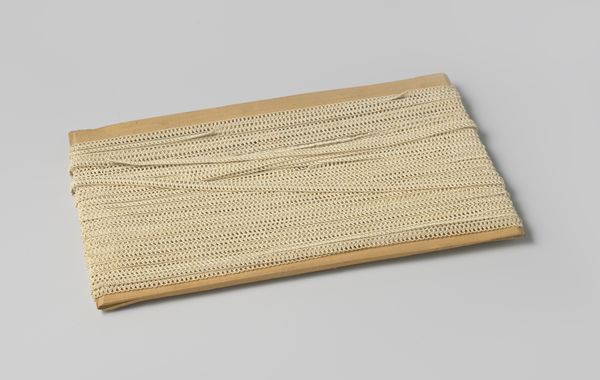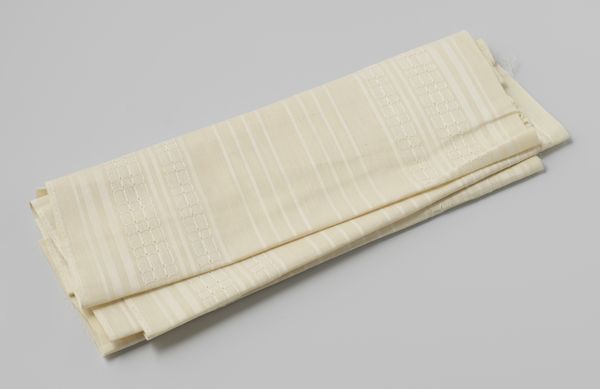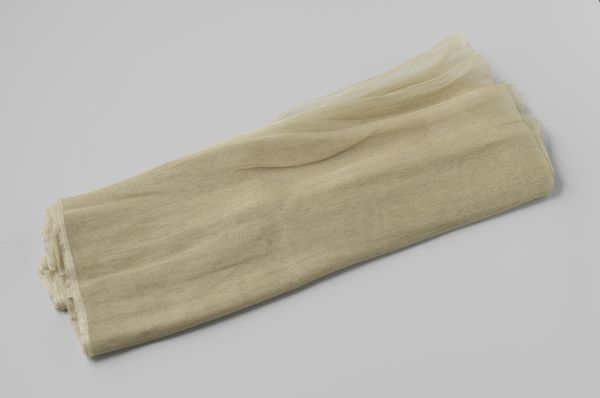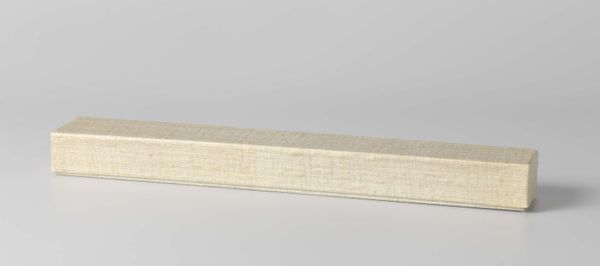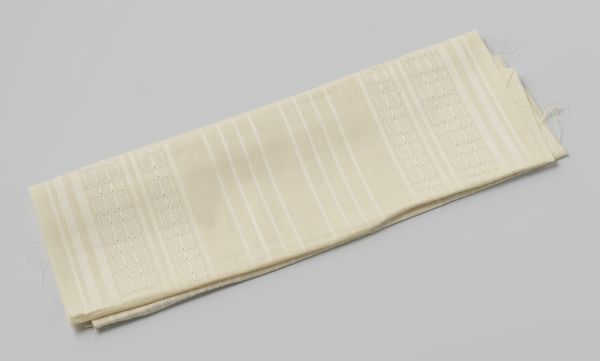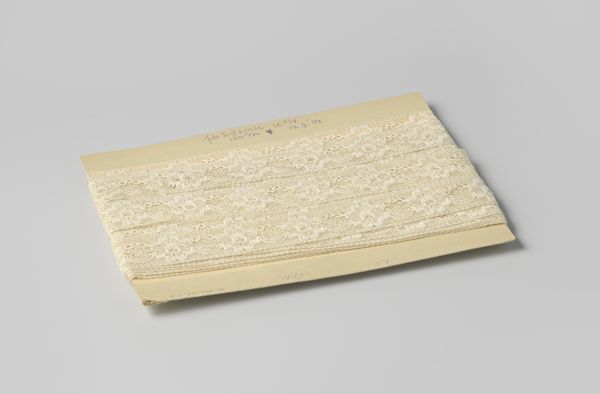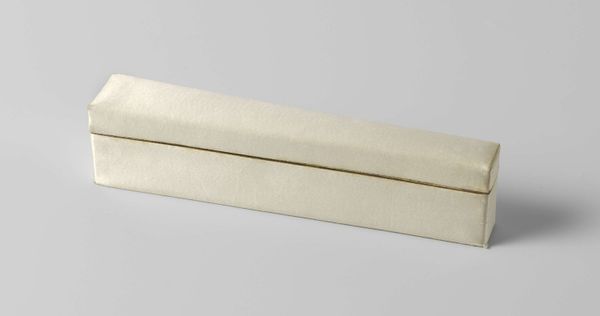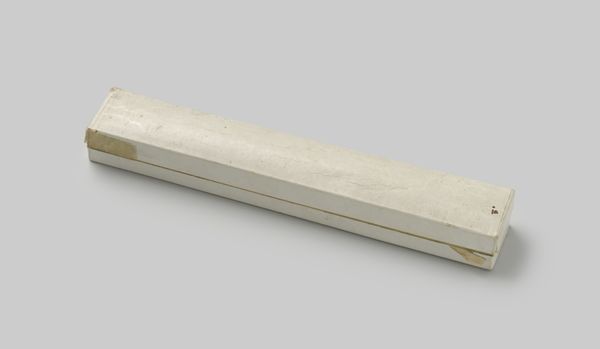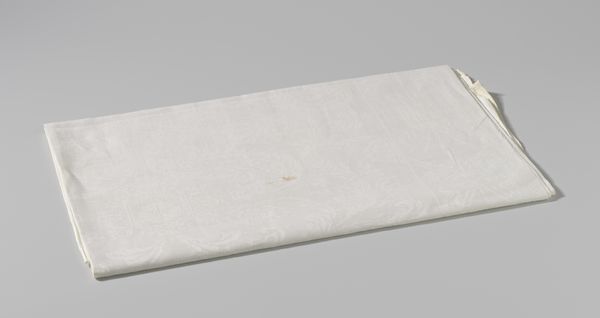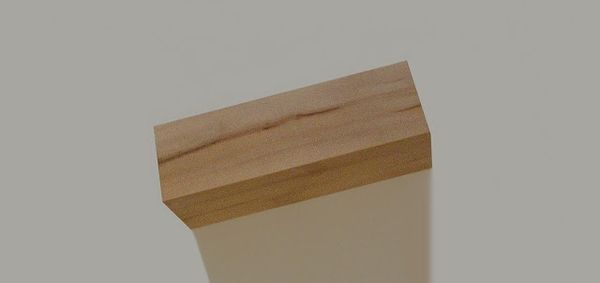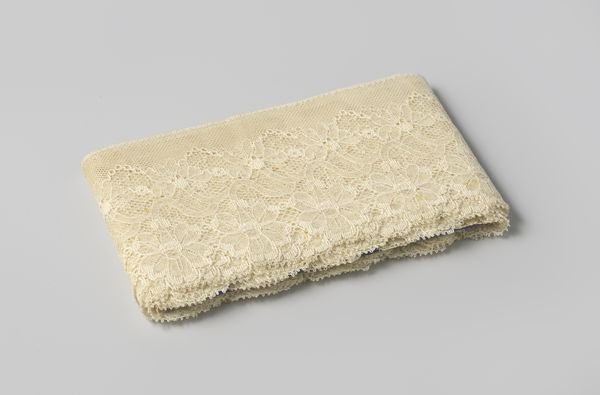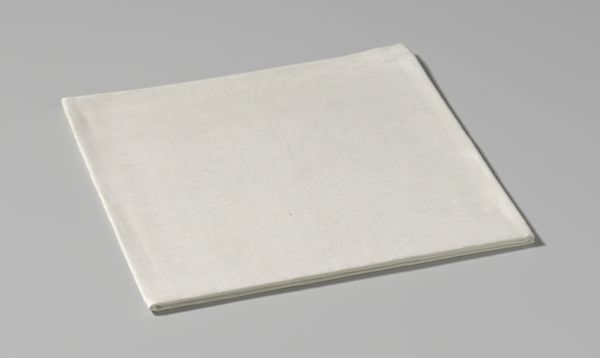
Tussenzetsel van roomwitte glanzende machinale kant, op karton c. 1925
0:00
0:00
textile
#
product shot
#
book binding
#
book design
#
studio lighting mockup
#
textile
#
personal journal design
#
book mockup
#
binding and layout
#
publication mockup
#
mockup template
#
publication design
Dimensions: width 3.5 cm, length 32.5 cm, width 22.5 cm
Copyright: Rijks Museum: Open Domain
Editor: This is a section of machine-made lace from around 1925, "Tussenzetsel van roomwitte glanzende machinale kant, op karton" residing at the Rijksmuseum. I am immediately struck by the almost clinical precision of the textile and how perfectly it seems preserved in this photograph. What are your first thoughts when you look at this lace? Curator: Well, I’m drawn to think about the conditions of its production. "Machine-made" is the key here. Prior to mass production, lace was painstakingly crafted by hand, a skilled labor often performed by women. The mechanization of lace making transformed not only the speed and scale of production but also the value associated with this craft. Editor: That's fascinating. So, you see it less as a decorative object and more as an artifact of industrial and social change? Curator: Precisely! Think about the shift in consumption that this represents. Mass-produced lace became accessible to a wider market, changing its function from a luxury item signaling status to a readily available embellishment. How does the support system influence our perception of the lace itself? The presentation on cardboard speaks to commerce, doesn't it? Editor: I suppose so. We almost never see textiles presented like this nowadays... It almost makes it look like a sample or a prototype. Do you see echoes of that context in its appearance now? Curator: Absolutely. We can even discuss labor conditions if we go deeper! But the most important thing is that this seemingly delicate piece speaks volumes about broader shifts in labor, materials, and consumption that reshaped society. The move from handmade to machine changes everything. Editor: This has changed my view considerably, and I will never see lace the same way again. Thank you. Curator: My pleasure. Thinking about the labor embedded within the object enriches our appreciation, don't you agree?
Comments
No comments
Be the first to comment and join the conversation on the ultimate creative platform.
